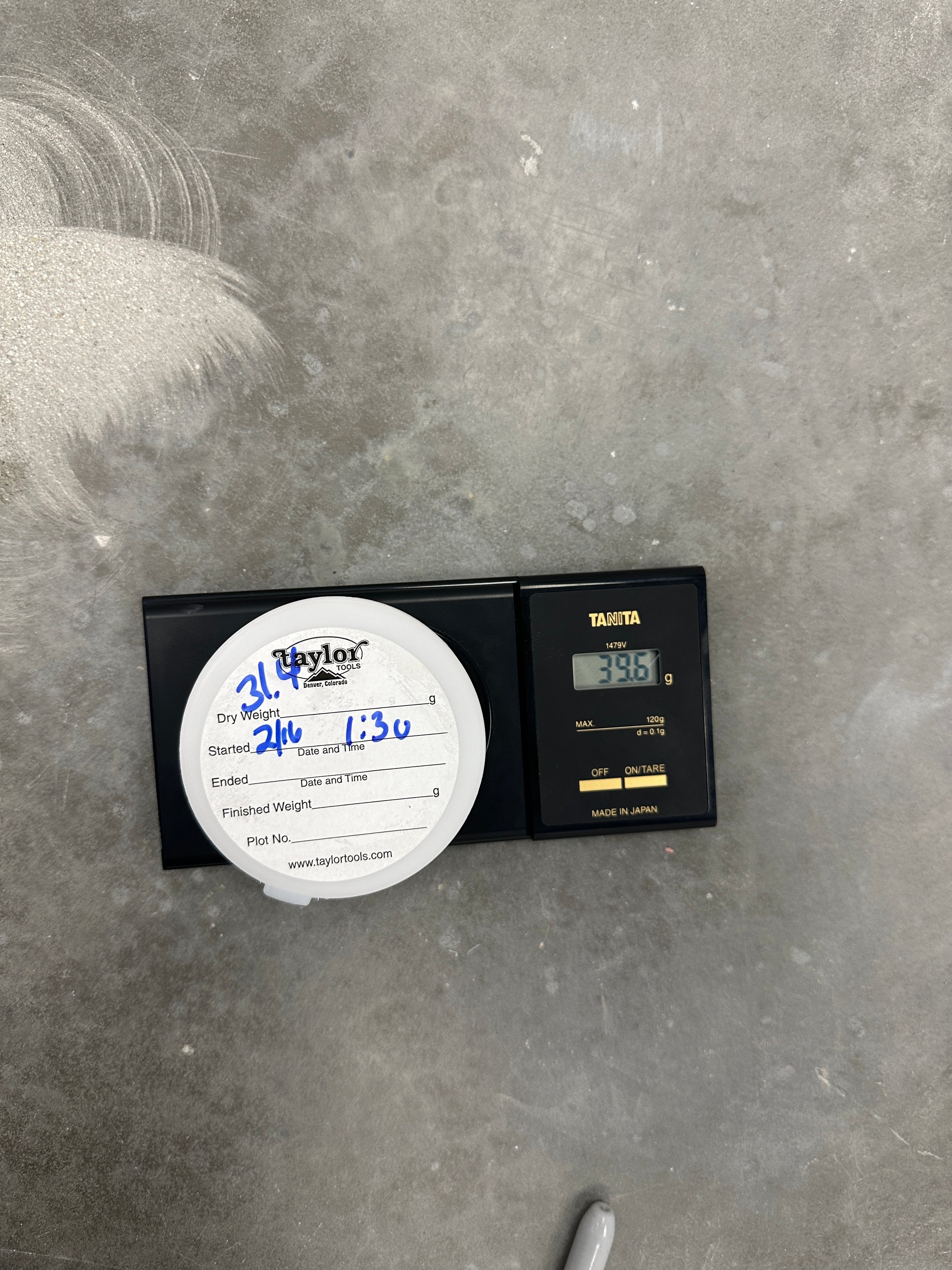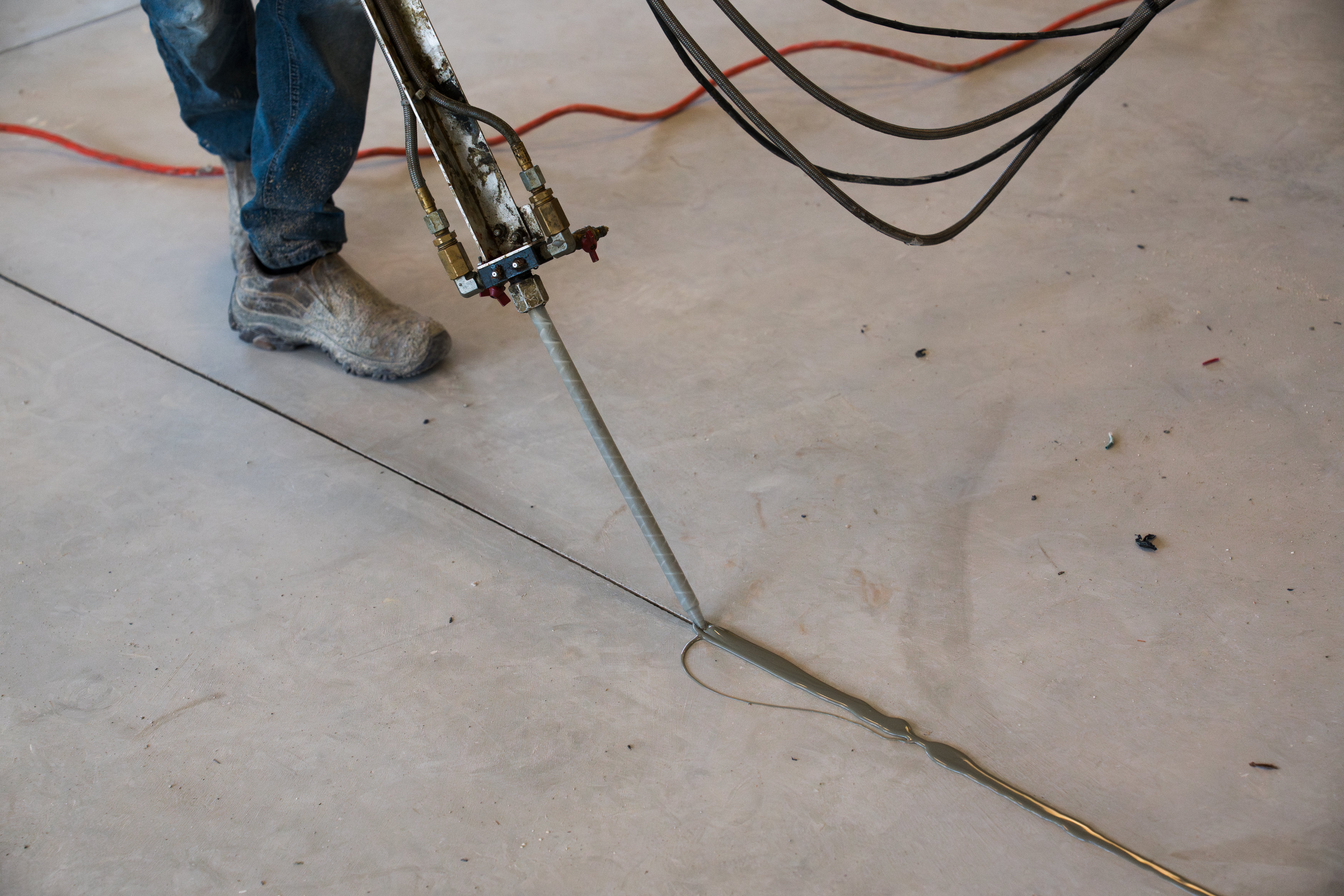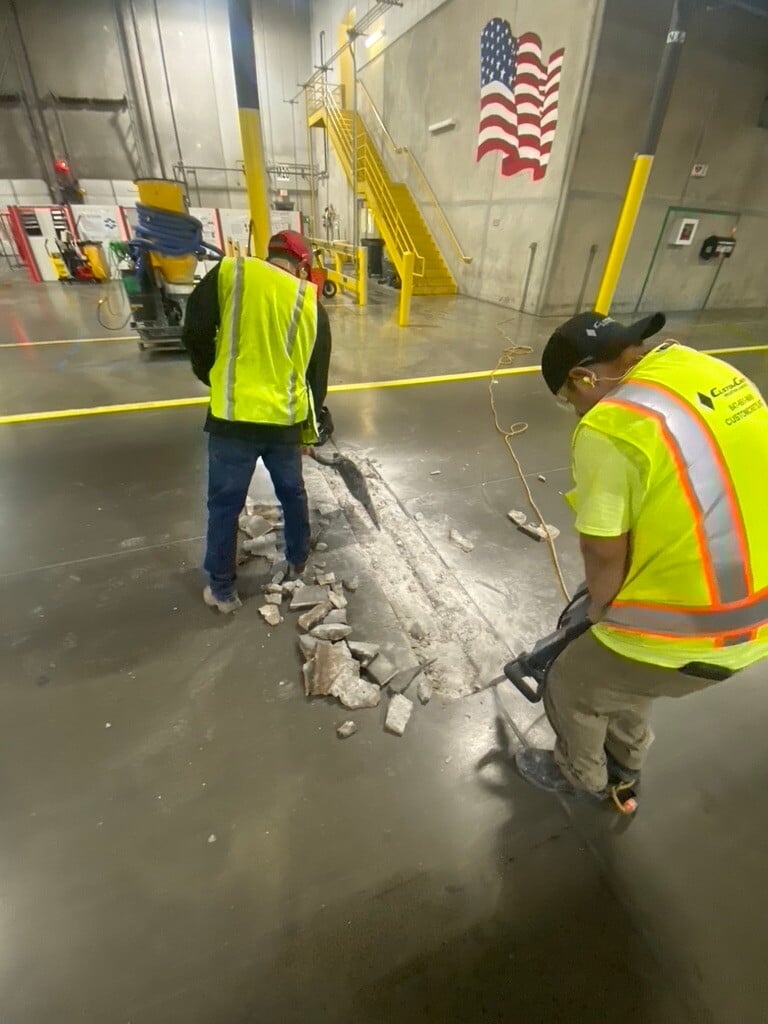Understanding RH vs. Calcium Chloride Moisture Tests for Concrete
August 20th, 2025
3 min read
By Tom Dassie

Before applying any floor coating or topping to a concrete slab, there’s one critical question you need to ask: How much moisture is in the slab? Even if the surface feels dry to the touch, excess internal moisture can lead to serious flooring failures—bubbling, delamination, discoloration, and adhesive breakdown among them.
Moisture-related issues are one of the leading causes of coating and flooring system failures. That’s why professional installers rely on proven testing methods to assess slab readiness. Two of the most common are Relative Humidity (RH) probes and Calcium Chloride (CaCl₂) testing.
In this blog, we’ll explore the differences between calcium chloride vs RH probes for concrete moisture, when each is used, and why understanding both is essential for successful floor installation.
Why Moisture Testing Matters for Concrete Floors
Moisture inside a concrete slab can migrate to the surface over time. If a floor coating or adhesive is applied before moisture levels stabilize, it can weaken the bond or trap vapor beneath the surface. This hidden pressure leads to blistering, peeling, or mold growth underneath floor systems.
By testing for moisture levels before applying a coating, you can:
- Avoid costly rework and coating failures
- Choose the right type of floor system for the conditions
- Know whether a moisture mitigation layer is needed
- Stay within warranty guidelines from manufacturers
Now let’s take a closer look at the two primary testing methods.
What Is a Calcium Chloride Test?
The Calcium Chloride Test (also known as the Moisture Vapor Emission Rate or MVER test) measures the amount of moisture vapor emitted from the surface of the concrete over a 60–72 hour period.

How It Works:
- A small dish of calcium chloride (a salt compound that absorbs moisture) is placed on a clean, prepared section of concrete and sealed with a cover.
- After a set time (typically 72 hours), the dish is weighed to determine how much moisture it absorbed.
- The result is expressed in pounds of moisture per 1,000 square feet per 24 hours.
What It Tells You:
This test gives a snapshot of surface-level moisture emissions. It’s a good option for evaluating conditions when installing thin coatings or adhesives that rely on surface bonding.
What Is RH Testing?
RH Testing (Relative Humidity Testing), also known as ASTM F2170, measures the internal moisture content within the concrete slab. It uses in-slab probes to assess the long-term behavior of moisture, not just surface conditions.

How It Works:
- A small hole is drilled into the concrete to a depth of 40% of the slab thickness (for slabs drying from one side).
- A probe with a digital sensor is inserted to measure the relative humidity inside the slab.
- The RH reading reflects how much moisture is present inside the slab, not just what’s being emitted at the surface.
What It Tells You:
This test provides insight into the moisture performance of the concrete.
Calcium Chloride vs RH Probes for Concrete Moisture: Key Differences
Which Test Should You Use?
The choice between calcium chloride vs RH probes for concrete moisture depends on your flooring system and manufacturer requirements.
Use Calcium Chloride Testing When:
- You're applying a thin film or adhesive that bonds directly to the surface
- The coating manufacturer specifically requires MVER data
- You need a quick, low-cost surface reading
Use RH Probe Testing When:
- You need to understand how moisture is behaving inside the concrete slab
- You're working with thicker coatings, self-leveling systems, or floor systems with vapor sensitivity
- You want to meet ASTM F2170 standards required by many modern manufacturers
Can You Use Both?
Yes. In fact, many contractors use both testing methods together to get a full picture of the slab’s condition.
- Calcium Chloride tells you what’s happening right now at the surface.
- RH Probes tell you what will likely happen over time from within the slab.
Using both allows for better planning, especially when there are environmental fluctuations or tight coating tolerances.
What If Moisture Levels Are Too High?
If your test results exceed the limits recommended by your coating or adhesive manufacturer, don’t panic. There are solutions:
- Moisture Mitigation Systems: These are epoxy or urethane-based barriers designed to stop moisture vapor from reaching the surface.
- Wait It Out: Sometimes, the concrete just needs more time to cure and dry. Environmental control (humidity, ventilation) can help speed this process. Note: This is only an option for new concrete.
- Alternative Flooring Systems: Some floors are designed to tolerate higher moisture conditions, reducing the need for mitigation like urethane cement.
Working with a contractor familiar with both testing methods ensures your floor is properly assessed and protected before installation begins.
Final Thoughts: Accurate Testing Sets the Foundation
Whether you're planning to install epoxy, tile, carpet, or polished concrete, understanding the differences between calcium chloride vs RH probes for concrete moisture is crucial for a successful floor.
Both tests offer valuable insights. While calcium chloride gives a quick snapshot of surface conditions, RH probes reveal the deeper picture—helping you make long-term decisions with confidence.
Want to know what those moisture test results really mean? Read our follow-up article: “What Moisture Levels Are Too High for Concrete Coatings” to understand the thresholds, risks, and next steps if your slab isn’t ready for coating.
Topics:




.jpg?width=1200&height=1600&name=Copy%20of%20IMG_1457%20(1).jpg)














